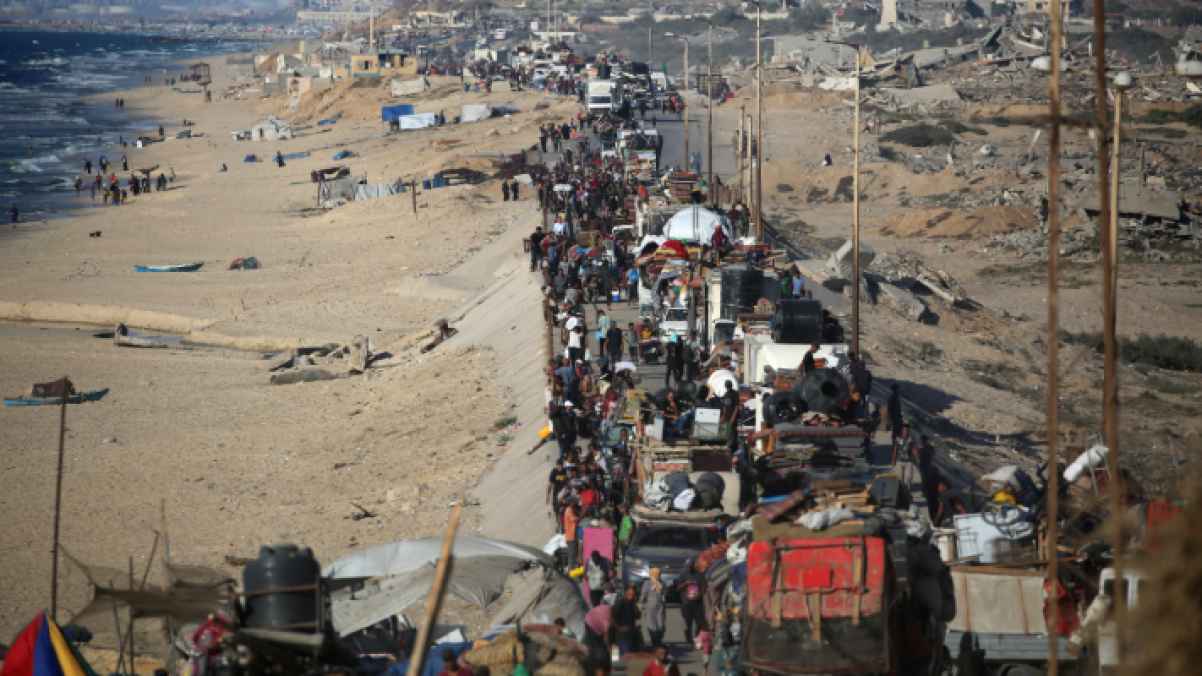Displacement from Nuseirat… Steps in search of lost safety

In the heart of the Gaza Strip, specifically from the Nuseirat refugee camp, the painful scene of displacement begins, as if it were a new chapter in the long story of Palestinian suffering. Families carry on their shoulders whatever belongings they could salvage, while others push carts covered in dust, and children are accompanied more by their tears than by their play. The road they take is not one toward safety, but toward an unknown destination that bears no resemblance to the peace they seek.
Every step they take tells a story heavy with pain. A woman clutches her child’s hand, fearing she might lose him in the crowd, while in her heart she carries the memory of a demolished home and lost land. An elderly man walks slowly, as though racing against time to preserve his dignity on a journey he was forced into, holding a folded old photograph in his hands, as if it were the last remnant of a complete life.
Astonishment in children’s eyes The children, with eyes full of bewilderment, paint portraits of sorrow without uttering a single word. Some ask about their school, their little toys, or the neighbors they no longer find along the road. Their silence speaks louder than words, for every moment they spend on these desolate paths is a harsh lesson in loss and waiting.
Patience on the edge of collapse As for the mothers, they carry the entire story. Their weary faces reflect the weight of responsibility as they try to protect their families from fear, hunger, and cold, while possessing nothing but prayers and fragile patience teetering on the edge of collapse. Their voices mingle with memories of past ululations, yet today only echoes of anguish are heard.
In the end, the scene of displacement remains a bloody canvas that cries out that this place is neither home nor safety. It is a forced journey that tells of wounds carved into the collective memory of the Palestinian people, and of sorrowful stories that generations will continue to inherit—a testament that roads covered in dust were never paths to salvation, but rather another wound added to a long record of displacement and estrangement.
